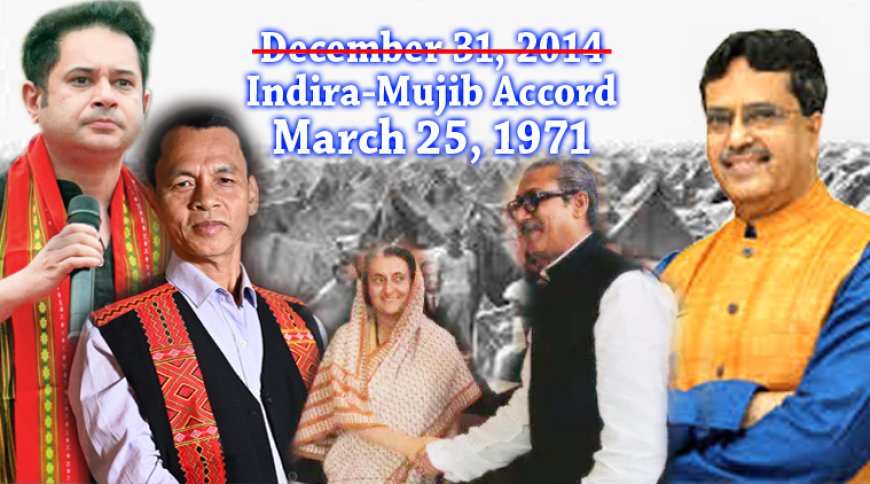Tripura’s Migrant Cut-Off: Politics Over Principles? Critics Question CM Saha’s 2014 Deadline
Despite the historical Indira-Mujib Accord of 1972 setting March 25, 1971, as the cut-off date for recognizing Bangladeshi migrants, Tripura Chief Minister Dr. Manik Saha has chosen December 31, 2014, as the benchmark for identifying illegal immigrants under the Citizenship (Amendment) Act, 2019. Political observers and indigenous rights groups allege the move is driven more by vote bank politics than national interest, while the Special Task Force (STF) formed to detect migrants is being dismissed as ineffective and symbolic.

Tripura is once again in the spotlight over its handling of cross-border migration from Bangladesh. Chief Minister Dr. Manik Saha has drawn criticism for enforcing December 31, 2014, as the legal cut-off for identifying illegal migrants, diverging from the Indira-Mujib Agreement, which clearly set March 25, 1971, as the deadline.
“Tripura will stick to the 2014 cut-off date as defined by the CAA. Anyone entering after this date is considered an illegal immigrant,” said CM Saha recently.
Critics argue this approach undermines historical accords and facilitates political gains. “It’s not about protecting identity or land. It’s about vote banks and inflating beneficiary numbers to boost central funding,” alleged a tribal rights activist under anonymity.
Signed in 1972, the Indira-Mujib Pact between India and Bangladesh clearly recognized that those who took shelter in India before March 25, 1971, due to the Bangladesh Liberation War, would not be treated as illegal immigrants.
Despite this agreement, post-1971 migrants continued to arrive in Tripura, many acquiring Indian documents and disappearing into the system. The central and state governments chose not to document these movements to avoid diplomatic and communal fallout.
The Numbers Tell the Story: Official Migration Data (1947–1970)
| Period | Arrivals |
|---|---|
| 1947 | 8,124 |
| 1951 | 184,000 |
| 1964–65 | 100,340 |
| 1965–66 | 13,075 |
| 1967–68 | 12,229 |
| 1969–70 (till Mar 24) | 5,774 |
| Total (1947–70) | 609,998 |
| 1971 | ~1.04 million |
Governments (both state and central) avoided publishing or collecting detailed figures to prevent social unrest or diplomatic tensions with Bangladesh. Tripura’s post-1971 demographic changes sparked tribal-Bengali tensions, and authorities often downplayed or avoided publicizing numbers to maintain harmony. Most migrants after 1971, especially from 1980s–2000s, procured ration cards, voter ID, and Aadhaar through local networks.
The indigenous rights-focused party Tipra Motha has intensified its demand to:
-
Revisit electoral rolls,
-
Identify migrants post-1971,
-
Enforce the Indira-Mujib Accord in Tripura as Assam did under the NRC process.
Party leaders argue that protecting the 2014 cut-off serves political interests at the cost of indigenous identity, land, and resources.
Tripura’s migrant crisis is far from resolved — and the 2014 cut-off only deepens the historical injustice, critics argue. While CM Saha insists on legal compliance with the CAA, indigenous voices claim the state is sidestepping the original accord for political expediency.
With rising infiltration figures and a toothless STF, the demand for a genuine, transparent migration audit based on the 1971 standard is gaining momentum.
By Sayani Mishra
